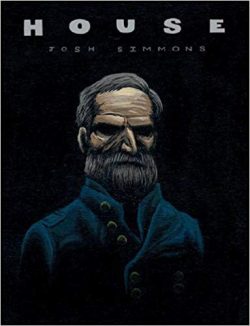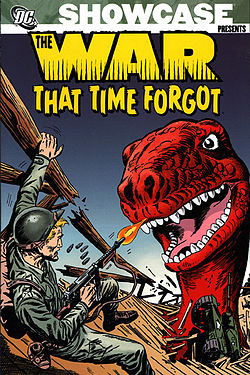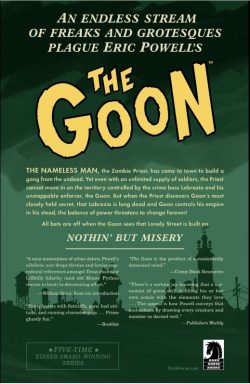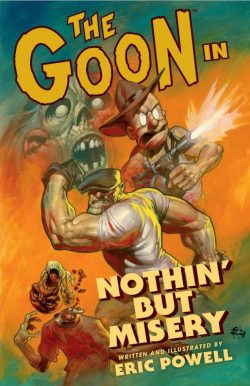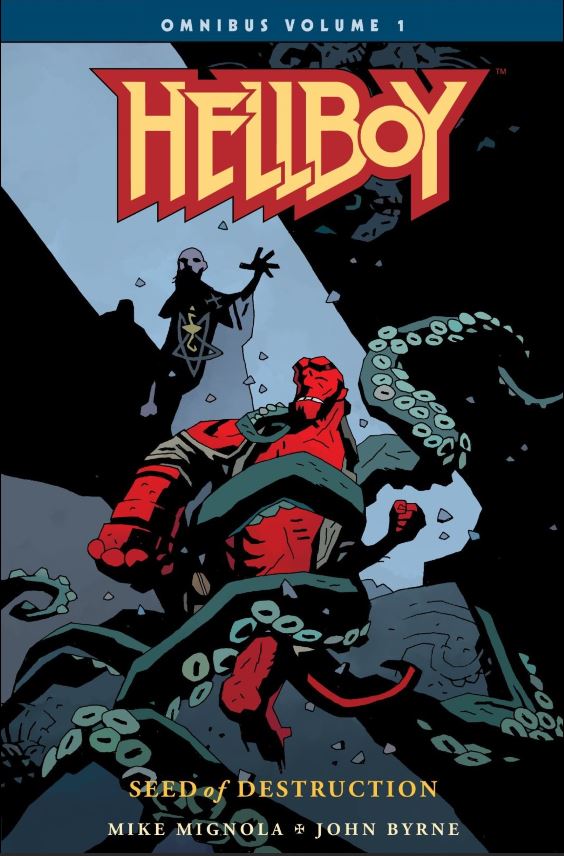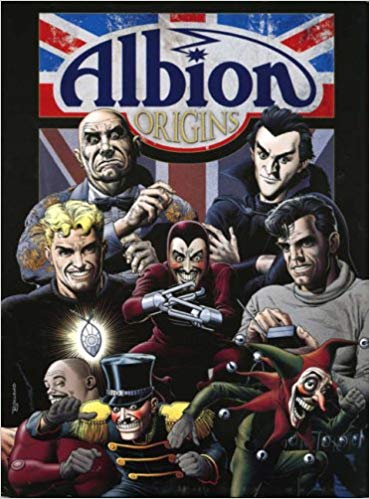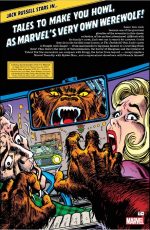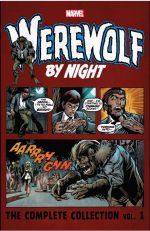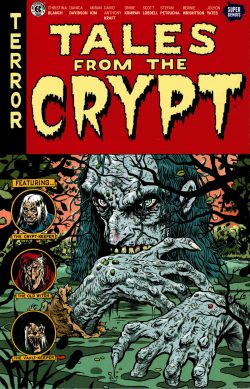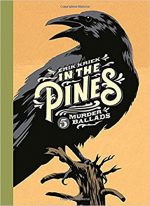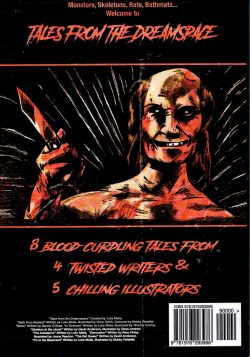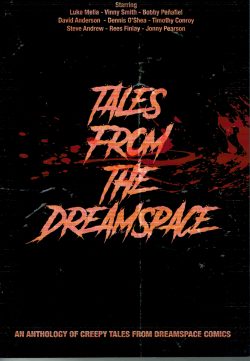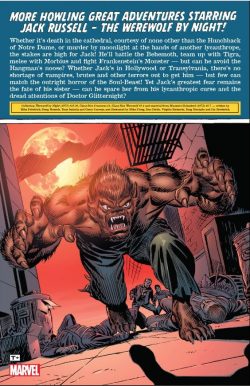
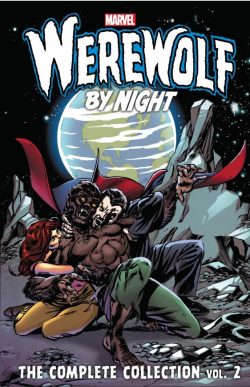
By Gerry Conway, Mike Friedrich, Tony Isabella, Doug Moench, Mike Ploog, Don Perlin, Pat Broderick, Vigilio Redondo, Yong Montaño & various (Marvel)
ISBN: 978-1-30290-
As Marvel slowly grew to a position of market dominance in 1970, in the wake of losing their two most innovative and inspirational creators – Steve Ditko and Jack Kirby – they did so less by experimentation and more by expanding proven concepts and properties.
The only real exception to this was a mass release of horror titles rapidly devised in response to an industry-wide down-turn in superhero sales. The move was handily expedited by a rapid revision in the wordings of the increasingly ineffectual Comics Code Authority rules.
Almost overnight nasty monsters (plus narcotics and bent coppers – but that’s another story) became acceptable fare within four-colour pages and whilst a parade of 1950s pre-code reprints made sound business sense (so they repackaged a bunch of those too) the creative aspect of the contemporary fascination in supernatural themes was catered to by adapting popular cultural icons before risking whole new concepts on an untested public.
As always, the watch-word was fashion: what was hitting big outside comics was to be incorporated into the mix as soon as possible.
When proto-monster Morbius, the Living Vampire debuted in Amazing Spider-Man #101 (October 1971) and the sky failed to fall in, Marvel moved ahead with a line of scary superstars – beginning with a werewolf and traditional vampire – before chancing something new via a haunted biker who could tap into both Easy Rider’s freewheeling motorcycling chic and the supernatural zeitgeist.
With its title cribbed from a classic short thriller from pre-Code horror anthology Marvel Tales #116 (July 1953), Werewolf By Night debuted in Marvel Spotlight #2. It had been preceded by masked western hero Red Wolf in #1 and followed by the afore-hinted Ghost Rider, but this hairy hero was destined to stick around for a while.
Marvel had a long-time tradition of using old (and presumably already copyrighted) names and titles when creating new series and characters. Hulk, Thor, Magneto, Doctor Strange and many others all got notional starts as throwaways before being re-imagined as major characters…
This copious trade paperback and eBook compendium compiles more moody misadventures of a good-hearted young West Coast lycanthrope who briefly shone as an unlikely star for the entire length of a trading trend, Werewolf By Night volume 1 #16-30, Giant-Size Creatures #1, Giant-Size Werewolf By Night #2-4, and a melange of monochrome material from Monsters Unleashed #6-7: all collectively spanning April 1974 to June 1975.
Jack Russell is a teenager with a thankfully rare but very disturbing condition. On her deathbed, his mother revealed unsuspected Transylvanian origins to her beloved boy: relating a family curse which would turn him into a raging beast on every night with a full moon… as soon as he reached his 18th birthday.
And so it began…
After many months of misunderstanding as Jack tried to cope alone with his periodic wild side, Jack’s stepfather Philip Russell expanded the story, revealing how the Russoff line was cursed by the taint of Lycanthropy: every child doomed to become a wolf-thing under the full-moon from the moment they reached eighteen.
Moreover, the feral blight would do the same to his little sister Lissa when she reached her own majority…
As Jack tried and repeatedly failed to balance a normal life with his monthly cycle of uncontrollable ferocity, he met his eventual mentor and confidante Buck Cowan, an aging writer who became Jack’s best friend after the pair began to jointly investigate the wolf-boy’s history. Their incessant search for a cure was made more urgent by little Lissa’s ever-encroaching birthday.
In the course of their researches they crossed swords with many monsters – human and otherwise – including off-the-rails cop Lou Hackett, who had been going increasingly crazy in his hunt for a werewolf nobody believed in, and fellow lycanthrope Raymond Coker who had found a shocking remedy to their condition…
For one werewolf to lift his curse he/she had to kill another one…
Following an Introduction from former Marvel editor Ralph Macchio, the suspense resumes with Jack in Paris. Seeking a cure in his Balkan homeland, but instead clashing with vampire lord Dracula, Jack and his new girlfriend Topaz (a powerful, mystically-attuned psychic and psionic) were enduring a tiresome – and crucially untimely – forced stopover in the City of Lights…
This leads to an impromptu clash with a modern-day incarnation of the Hunchback of Notre Dame (he doesn’t sing and he’s not very gentle here) and ‘Death in the Cathedral!’. Scripted by Mike Friedrich and inked by Frank Chiaramonte, this bombastic battle was co-originator Mike Ploog’s farewell performance as artist in residence.
WBN #17 was by Friedrich & Don Perlin, with Jack and Topaz escaping Paris only to fall into the Committee’s latest scheme as the blustering Baron Thunder and his favourite monster ‘The Behemoth!’ tried to make the werewolf their plaything again.
The Committee were a long-term adversary: a cabal of crazy capitalists who wanted to own the werewolf because he could scare the public, allowing them to create a panic-crazed sales boom…
The tale concluded in ‘Murder by Moonlight!’ as the secret of Jack’s mystery neighbour is exposed when Thunder attacks again, aided by witch-queen Ma Mayhem. However, it was all a feint for the Committee to kidnap Lissa who would, one day soon, become a werewolf too…
Whilst searching for her, Jack then falls foul of two undead film-stars haunting the Hollywood backlots in #19’s ‘Vampires on the Moon’ after which Giant-Size Creatures #1 moodily re-imagines a failed costumed crusader to introduce a new creepy champion in ‘Tigra the Were-Woman!’ (by Tony Isabella, Perlin & Vince Colletta).
Here Greer Nelson, one-time feminist avenger The Cat, is “assassinated†by Hydra agents, revived by ancient hidden race the Cat-People and becomes an unwilling object of temporary affection to the feral and frisky moonwalker Jack Russell…
Following ‘Waiter, there’s a Werewolf in my Soup!’ a text piece also from Giant-Size Creatures that explains the genesis of Marvel’s horror line, WBN #20 debuts writer Doug Moench to wrap up all the disparate plot threads in ‘Eye of the Wolf!’: a rushed but satisfactory conclusion featuring a whole pack of werewolves, Thunder, Ma Mayhem and lots and lots of action.
With the decks cleared, Moench began to make the series uniquely his own, beginning with #21’s ‘One Wolf’s Cure… Another’s Poison!’ wherein he starts playing up the ever-encroaching 18th birthday of little Lissa before deftly engineering the final reckoning with off-the-rails cop Lou Hackett, who had been going increasingly crazy in his obsessive hunt for the werewolf…
With the stage set for some truly outrageous yarn-spinning we abruptly divert to a brace of sidebar shorts taken from Monsters Unleashed #6 and 7.
Here Gerry Conway wrote prose yarn ‘Panic by Moonlight’ and concluding instalment ‘Madness Under a Mid-Summer Moon’ (with spot illustrations by Ploog and Pat Broderick & Klaus Janson) detailing how a gang of bikers picked the wrong night to home-invade the flashy singles complex Jack Russell lived in…
The tantalising diversion is bracketed by the painted covers of the monochrome magazines and Gil Kane’s cover for earlier collection Essential Werewolf By Night volume 2.
With Moench at the helm and almost exclusively pencilled for rest of the run by the criminally underrated Don Perlin, the midnight comics mysteries resume the Vince Colletta inked Giant-Size Werewolf By Night #2 as ‘The Frankenstein Monster Meets Werewolf By Night’.
Roaming the streets of New York in ‘Prisoners of Flesh!’, the recently resurrected massive mute monster hops a freight train west after overhearing of a mystic named Danton Valya who can transplant souls into new bodies…
He arrives in Los Angeles just as Jack Russell discovers Lissa has been abducted by Valya’s Satanist cult ‘To Host the Beast’ before cataclysmically clashing with the monster who has only to let the diabolists sacrifice the werewolf and Lissa to gain his heart’s desire…
Tragically the noble artificial man has more compassion than the cultists and prefers his own sorry existence to benefiting from ‘The Flesh of Satan’s Hate!’…
Werewolf By Night #22 (Moench, Perlin & Colletta) then introduces crazed murder-maniac Atlas, who stalks and slays many of Buck’s movie friends. Moreover, when Russell’s hairy Other encounters the ‘Face of the Fiend!’, Atlas beats the beast unconscious and in the morning light bleary Jack is subsequently arrested for the latest murder…
Lieutenant Vic Northrup was a good friend of deceased former Hackett and knows Russell is hiding something, but eventually has to release him for lack of evidence. Picking Jack up from the station, Buck reveals he has gleaned the inside story of Atlas and his own historical involvement in the story, just in time to become the next target…
Fortuitously, the werewolf is on hand when Atlas attacks and the battle explodes into LA’s streets where disbelieving cops have to admit that ‘The Murderer is a Maniac!’
In #24 Buck introduces Jack to fringe scientist Winston Redditch who claims to have chemically isolated the constituents of the human psyche and thus might be able to suppress Jack’s periodic bestial outbursts. Sadly, the boffin accidentally ingests the serum himself and unleashes ‘The Dark Side of Evil!’
The remorseless sadistic thug he becomes calls himself DePrayve and fights the werewolf to a standstill, giving Northrup an opportunity to capture the hirsute “urban legend†which has stalked the city and drove Hackett crazy…
From WBN #25 the art took a quantum leap in quality as Perlin – already co-plotting the stories – began inking his own pencils. When the beast busts out of custody ‘An Eclipse of Evil’ sees Redditch turning his warped attention to the lycanthrope as a potential guinea pig for further experimentation, only for both the feral fury and dastardly DePrayve to be targeted by a deranged vigilante and “protector of purity†calling himself The Hangman…
The horrific three-way clash results in ‘A Crusade of Murder’, with Redditch hospitalised, the vicious vigilante in custody and battered, bloody-yet-unbowed Jack still free and still cursed…
Eschewing chronological order for the sake of unbroken continuity-clarity, January’s Giant-Size Werewolf By Night #3 pops up here and reveals a ‘Castle Curse!’ (inked by Sal Trapani) in which Jack returns to Transylvania after receiving a monster-infested vision of former love interest – and psionic powerhouse – Topaz in ‘Spawned in Dream… Slain in Nightmare!’
Jack drags Buck and Lissa ‘Home to Slay!’ in the Balkans, finding the old family home under siege by pitchfork-wielding villagers who have all their worst fears confirmed when he goes hairy and gets hungry, before finally tracking down Topaz in the care – and custody – of a gypsy matriarch with an arcane agenda of her own.
The blood-crazed old witch has a tragic connection to the Russoff line and is exploiting Topaz’s restored powers to enact a grisly ‘Vengeance in Death!’ upon the villagers by raising an army of zombies.
The chain of events she set in motion can only end in slaughter…
Werewolf By Night #27 (March 1975) began a chilling and fantastic extended eldritch epic with the introduction of ‘The Amazing Doctor Glitternight’. Back in the USA, Jack’s feral alter ego runs loose on the isolated Californian coast and is drawn to a cave where a bizarre wizard makes monsters from what appears to be fragments of Topaz’s soul…
The eerie mage is actually hunting for Topaz’s dead stepfather Taboo and will not be gainsaid, even after Jack’s uncontrollable were-beast slaughters his monstrous masterpiece…
The wizard intensifies his campaign in ‘The Darkness from Glitternight’, heaping horrors upon Jack and friends before capturing Lissa on her birthday and using dark magic to turn her from simple werewolf into ‘A Sister of Hell’…
The spectral re-emergence of Taboo proves a turning point as wolf battles hellbeast and everybody clashes with Glitternight before a ‘Red Slash Across Midnight’ seemingly results in a cure for one of the tortured Russell clan…
April’s Giant-Size Werewolf By Night #4 offers a long-delayed and anticipated clash with living vampire Morbius: beginning with ‘A Meeting of Blood’ (Moench & Virgil Redondo) with the former biologist tracking his old girlfriend Martine and discovering a possible cure for his own exsanguinary condition.
Unfortunately, the chase brings him into savage and inconclusive combat with a certain hairy hellion and the solution is forever lost…
Also included in that double-sized issue is Moench & Yong Montaño’s ‘When the Moon Dripped Blood!’, wherein Jack and Buck stumble across a group of rustic loons all-too-successfully summoning a ghastly elder god. Although great at consuming and converting human offerings and acolytes, the appalling atrocity is seemingly no match for a ravening ball of furious fangs and claws…
This second sinister compendium concludes with a bonanza of bonus features: Arthur Adams & Jason Keith’s Werewolf By Night Omnibus cover, original art pages by Ploog & Chiaramonte, Perlin & Colletta and all-Perlin, plus werewolf art by Perlin & Joe Rubinstein and Paul Ryan & Rubinstein taken from various iterations of the Official Handbook of the Marvel Universe.
This moody masterpiece of macabre menace and all-out animal action covers some of the most under-appreciated magic moments in Marvel history; tense, suspenseful and solidly compelling. If you feel the urge to indulge in a mixed bag of lycanthropes, bloodsuckers and moody young misses – this is a far more entertaining mix than many modern movies, books or miscellaneous matter…
© 1972, 1974, 1975, 2017 Marvel Characters, Inc. All rights reserved.

